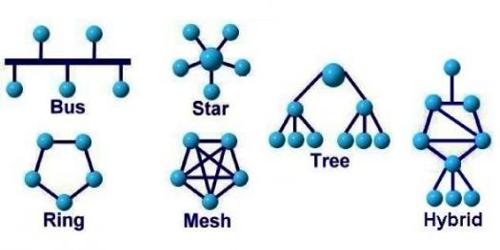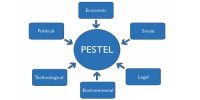A Topology of the network defines the manner in which the network devices are arranged and connected to each oilier in a network. It defines the shape of the communication network. A network topology is the arrangement of the various elements (links, nodes, etc.) of a computer network. Essentially, it is the topological structure of a network and may be depicted physically or logically. There are five common types of network Topologies.
- Bus Topology,
- Ring Topology,
- Star Topology,
- Tree Topology,
- Mesh Topology.

Fig: Different Types of Topologies
Bus Topology: In the bus network topology, every workstation is connected to the main cable called the bus. Therefore, in effect, each workstation is directly connected to every other workstation in the network.
Star Topology: In the star network topology, there is a central computer or server to which all the workstations are directly connected. Every workstation is indirectly connected to every other through the central computer.
Ring Topology: In the ring network topology, the workstations are connected in a closed loop configuration. Adjacent pairs of workstations are directly connected. Other pairs of workstations arc indirectly connected, the data passing through one or more intermediate nodes.
Mesh Topology: The mesh network topology employs either of two schemes, called full mesh and partial mesh. In the full mesh topology, each workstation is connected directly to each of the others. In the partial mesh topology, some workstations are connected to all the others, and some are connected only to those other nodes with which they exchange the most data.
Tree Topology: The tree network topology uses two or more star networks connected together. The central computers of the star networks are connected to the main bus. Thus, a tree network is a bus network of star networks.
Logical (or signal) topology refers to the nature of the paths the signals follow from node to node. In many instances, the logical topology is the same as the physical topology. But this is not always the case. For example, some networks are physically laid out in a star configuration, but they operate logically as bus or ring networks.















